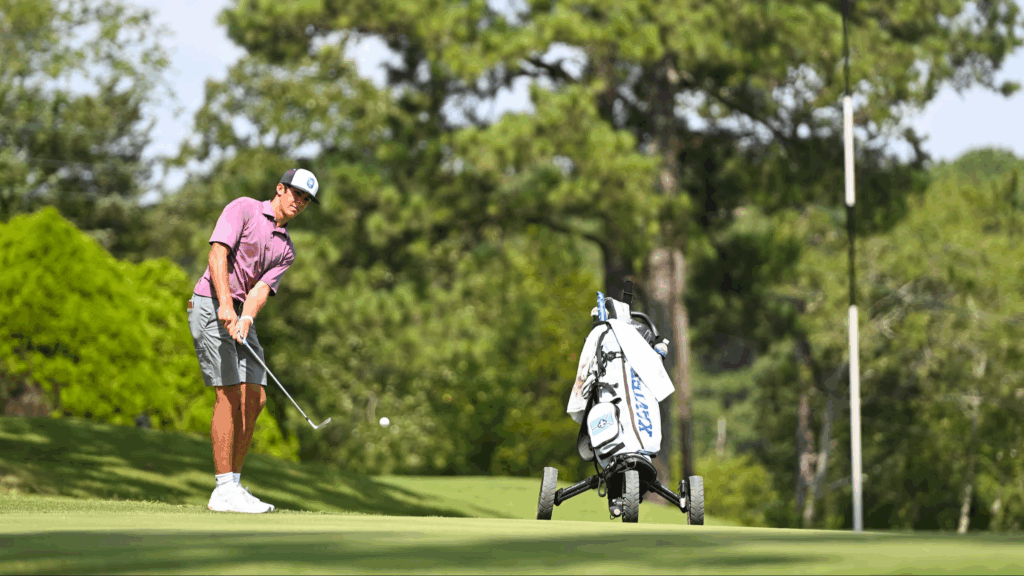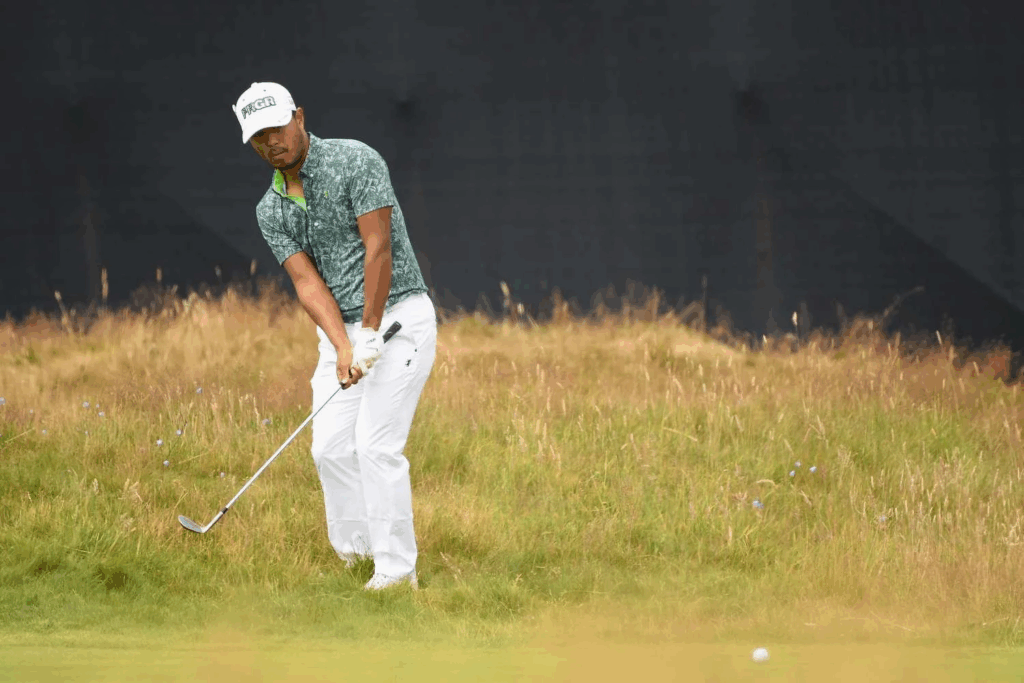What Is the Bump and Run?
The bump and run is a chip-style shot that flies low, lands nearly immediately, and rolls along the fringe or green toward the hole. Unlike lofted pitches, it’s a ground-hugging, precise approach shot using low-lofted clubs like a 7- or 8-iron for better roll and control.
Because it gets rolling quickly and remains low, it’s often considered more reliable, and easier, for higher handicap players than higher, spin reliant shots.
When Should You Use It?

This shot shines in these situations:
- Short grass areas: Soft lies near the green or fringe where rolling helps.
- Firm or fast greens: Keeps the ball low and under control without ballooning mid-air.
- Tight lies or slippery turf: Where lofted wedges dig or skid.
- No obstacles between you and the green: Works only when you have clear access to let the ball land and run.
As a newer golfer, getting the ball back on the ground as quickly as possible around the green will give you the best opportunity to score. Mastering this shot can give you confidence in getting on the green and down in as few putts as possible.
Which Club Should I Use?
When selecting a club for the bump-and-run, a lower lofted club like a mid iron, think 7 or 8, is typically a smart play. Stand a bit closer to the ball than when taking a normal shot, with a slightly narrower stance. Grip down a bit, and create a slight forward shaft lean at address with the majority of your weight on your front foot. The ball should be close to center or even slightly back in your stance to promote a low launch.
The Swing

Using a pendulum motion, rock your shoulders smoothly as if you were putting. It is important to keep your wrists and hands quiet. Let your shoulders guide the stroke. You’ll also want to make sure you finish the swing. Stopping too soon could cause a mishit or chunk. When determining a landing spot for the ball, think about a pace or two onto the green. This will allow the ball to roll out. Remember, this is not a high spin shot. Allow a natural pivot in your hips while maintaining balance and stability.
Practice Drills to Get It Right
Mastering the bump and run requires dedicated practice. Check out the drills below to start working it into your routine. You’ll have it down in no time.
| Drill Name | What to Do | Why It Helps |
|---|---|---|
| Landing Spot Practice | Pick a spot onto the green; aim just to land there and run out. | Trains control of both landing and roll distance. |
| Surface Transition Drill | Practice from fringe to green to see how ball behaves rolling across turf. | Helps understand how lie and surface affect roll. |
| Single-Club Distance | Use one club (like a 7-iron) and practice multiple lengths by adjusting stroke size. | Builds feel for distance and consistency with one club. |
| One-Hand Stroke Drill | Use only your lead or trail hand on the grip; stroke with just that hand. | Promotes smooth tempo and reduces reliance on wrist manipulation. |
Why It Matters for Beginners

For newer golfers, the bump and run is a valuable tool because it prioritizes consistency over flair. Instead of relying on a lofted, spin-heavy shot that requires perfect contact, this technique simplifies things by getting the ball rolling quickly and predictably. By trusting the ground rather than the air, players develop better control of roll distance and reduce the chances of mishits. Mastering the bump and run also builds confidence; once you realize you can regularly get the ball near the hole from around the green, you’ll avoid wasted strokes and see three-putts become less frequent.
Final Takeaway
The bump and run is one of golf’s most accessible and practical shots—especially for newer or high-handicap players. It’s reliable, easy to practice, and versatile around the greens. Set narrower with a low-lofted club, grip it putting-style, rock your shoulders, and let the ball land and roll. Practice the drills, trust the lower flight, and you’ll start seeing smoother up-and-downs and lower scores.
